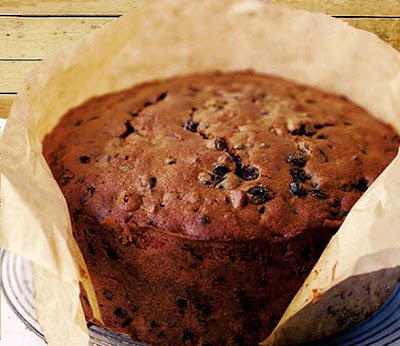The turkey is the centre-piece of the traditional Christmas Dinner and it's also great for any other special occasion, like Thanksgiving in the USA, which is why cooking it properly is so important.
Mess it up and not even the best side dishes will save you!
Turkey is becoming very popular because it is relatively low in cholesterol and high in vitamins that boost the immune system. It's also very juicy and tasty if cooked right!
So here are some tips on how to prepare & cook your perfect Turkey!
 |
| A juicy & tender whole roasted turkey really does add to the sense of occasion at Christmas or Any time! |
1. First things first. Buy a Fresh Turkey if you can. Don't buy a turkey that has been pre-stuffed as mishandling or incorrect cooking can cause bacteria to multiply inside the stuffing.
2. It's so important that if you are buying a frozen bird, that you thaw your turkey completely before cooking. If it’s done improperly, bacteria can multiply to a point where even oven temperatures won't be able to kill all of them off. This can cause food poisoning.
The safest thing to do is to thaw your turkey in the fridge, but if you don't have the room, put it into a roasting tray in a cool room, covered with a dry cloth until it defrosts. You should leave the turkey in its original wrapper until you're ready to cook it.
3. If you're placing the turkey in the fridge (raw meat should always go the bottom shelf) also put it on a tray to catch all the juices that may leak out. It takes approximately 2 days for a 15 pound turkey to fully defrost.
4. Don't wash your Turkey. The water splashing around will spread more bacteria than you are washing off it.
5. Add some extra flavour by loosely filling the cavity of the bird with some peeled vegetables like carrots, celery, onion & garlic which work great together.
6. Before roasting, coat the outside of the turkey with real butter and season it with sea-salt and ground black pepper. Cover the complete bird with streaky bacon to add more flavour and to keep it from browning too much. Don’t forget to cover the legs too! Add a mug of water to the tray.
7. Loosely cover the complete bird with tin foil and scrunch it up around the edge of the tray. Once you get the turkey in the oven, resist the temptation to open the oven door! Every time you open the door the temperature drops and all the moisture escapes increasing the likelihood of a dry bird.
8. Have your oven pre-heated to 180°C (170°C for a fan oven), 365°F, Gas mark 4, so that the turkey is going into a hot oven.
The easiest way to calculate Turkey Cooking Time is to convert the weight to Pounds (lbs) and Cook the bird for 20 Minutes per pound with another 20 minutes Extra added to the total cooking time.
To convert from kg to pounds multiple the kilogram weight by 2.2
Example:
A 5kg Turkey x 2.2 = 11 pounds
11 pounds x 20 minutes = 220 minutes
PLUS add the 20 minutes Extra
equals 240 minutes (4 hours) Total Cooking Time
9. About half an hour before the turkey should be done, remove the foil from the breast to crisp up the skin.
10. Test the turkey using a sharp pointed knife by inserted the knife the meaty area above the top of the leg. Push in the blade and the gently ease down on it. Juice from the turkey will run down the blade.
If the juices run clear then it is cooked. If there are traces of pink in it give it another half an hour in the oven and test it again.
If you have a cooking thermometer ensure that the centre of the thickest parts return a minimum temperature of 65°C.
11. After you take the turkey out of the oven let it rest, under tinfoil, for about 15 minutes before carving. This lets the hot juices relax and spread evenly through the meat, giving a moist and juicier bird.
12. Relax, Don't Panic and Enjoy!
My Favourite Stuffing Mix
This is a stuffing recipe that I have used for years. It is versatile and adaptable and can be used with any type of meat. This makes enough for 8 people - generous portions!
 |
| This is my recipe but you can add whatever herbs you like to your stuffing! |
My Ingredients:
250g (10oz) butter
200g (8oz) diced onion
100g (4oz) diced red onion
100g (4oz) grated carrot
1 tblsp chopped thyme
1 tblsp chopped parsley
1/2 tspn cracked black pepper
2 cloves garlic diced
1 tablespoon of Mixed herbs
300g (12oz) white breadcrumbs made with crusts and all
300g (12oz) wholemeal breadcrumbs made with crusts and all
Use Gluten Free Bread if you wish
My Method:
1. Simply place the butter and all other ingredients, except the crumbs, on a medium heat and cook gently, stirring, until the onions and other veg are soft.
2. Add the breadcrumbs and mix in well until the crumbs have absorbed all the butter and juices.
3. If the stuffing feels a little dry (depending on the type of day, the weather, the heat of the kitchen or one of another hundred amazingly uncontrollable conditions) I tend to add a little splash of my favourite white wine at this stage and mix well and then add a little of the cooking juices from the cooked turkey just before serving.
Enjoy your Turkey!
Zack


















